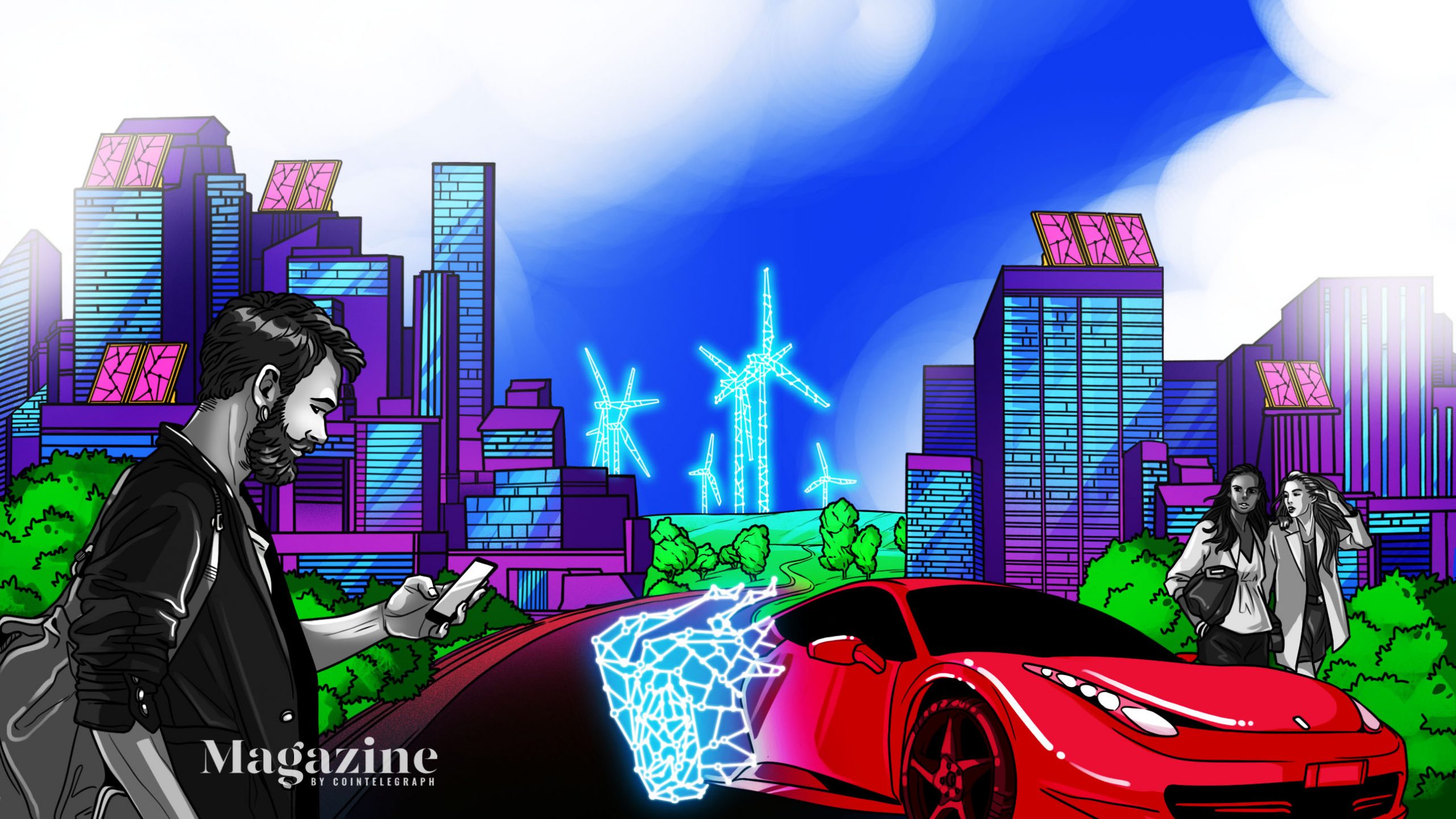Much has been said about Bitcoin‘s carbon emissions. Far less has been said about the potential of blockchain to increase the efficiency of renewables
Much has been said about Bitcoin‘s carbon emissions. Far less has been said about the potential of blockchain to increase the efficiency of renewables by transparently managing supply and demand. Blockchain doesn‘t pose a threat to the planet — it’s going to play an essential role in helping to bring about a net-zero carbon emission economy.
It is a few years in the future: You are sitting on your sofa, having a nice coffee after loading the washing machine. You’ve switched it on but, of course, the Internet of Things-enabled machine checks prices and will run when it hits a cheap electricity window. The Tesla outside in the drive is fully charged, you don‘t have any plans to go any further than the supermarket today, so the battery is available to sell its energy back to the grid and deposit tokens in your energy wallet if the electricity grid requires power.
Back to today.
Energy and electricity, in particular, are vital to our society. The grim effects on Texas in the 2021 freeze — where more than 4.5 million homes and businesses were left in the icy dark, causing misery and 246 deaths — showed us how vulnerable all our systems are to trouble with the electricity supply.

In 1882, the first U.S. electricity plant, the Pearl Street Station, started producing power for around 85 customers‘ lights in Manhattan, using DC current. Westinghouse, a rival to Thomas Edison’s company, invented AC power and built a big hydropower plant at Niagara Falls to supply electricity to Buffalo, NY. Other developed countries followed suit. The model was a large centralized power plant that, through a grid, sent high voltage electricity to substations and distributed it to residential and business consumers.
This model worked well for more than a century or so. It does, however, rely on large, expensive and centralized power stations fueled by coal, natural gas, hydro or nuclear. It‘s a top-down structure.
Well, DER…
Now we have a new paradigm: In a transition to a decarbonized future, we have lots of Distributed Energy Resources (DERs) to deal with. These could be wind or solar generators, but they could also be battery storage, hydrogen fuel cells, smart appliances or electric vehicles. Utility company Dominion Energy, for example, is investing in a fleet of school buses in Fairfax, Virginia.

Twice a day, they will be picking up and dropping off kids. The rest of the time, they sit in the depot to serve as a giant battery for the local power grid. Instead of a few large power stations, soon, we will have a very complex web of producers and consumers. In the old days, if a national grid needed more power, someone flicked a switch and another power plant came online. Conversely, if there was too much, an engineer somewhere shut one down.
Balancing all the loads from different inputs and outputs is much more difficult in a distributed system and requires a lot of AI, data analytics and some sort of transparent, accessible, trusted and un-manipulable accounting system. You might have come across something of this nature. Spoiler: These are blockchain and tokenomics.
The new energy paradigm is a rough beast, slouching to be born, to misquote Irish poet W.B. Yeats. But, we can look at a few pioneers in the field.
Distro – Port of Rotterdam
Rotterdam in the Netherlands is the largest port in the world, handling incredible amounts of cargo every day. It uses a lot of electricity. BlockLab.nl teamed up with S&P Global Commodity Insights, a giant in the field of commodity trading and analytics, to create Distro, an AI-based trading platform to buy and sell energy from a solar power microgrid on the roofs of buildings within the port complex.
It uses high-frequency trading and blockchain accounting to drive down user costs by 11%, produce returns up 14% and reduce emissions of CO2, according to an in-house analysis released October 5, 2021. The success of this pilot project has generated tremendous interest in replicating this in other places, according to James Rilett, senior director of Innovation at S&P Global Commodity Insights.

BlockLab is a multi-disciplinary innovation laboratory that aims to put blockchain technology into practical use by building applications to enhance the global energy transition and optimize global supply chains. It is backed by the Port of Rotterdam and collaborates with leading universities and technology developers.
Janjoost Jullens, energy lead at the BlockLab, met Rilett at an exhibition and there was an immediate exchange of ideas. James Rilett says,
“We were already thinking about AI, blockchain, big data and the energy transition. What we wanted to do is bring the best bits of the proven evolution of energy markets to a new technological paradigm.”
The Port of Rotterdam backed the…
cointelegraph.com
